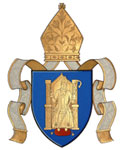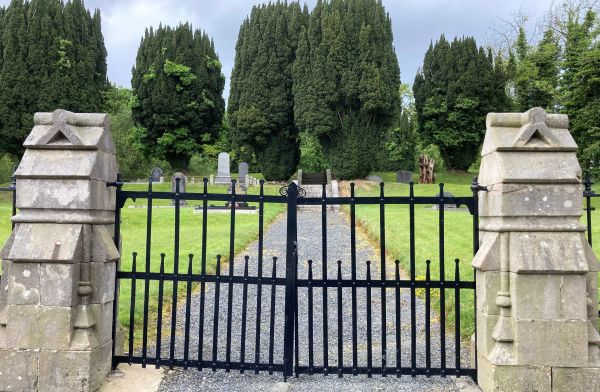 |
 |
News
Commemorating Church of Ireland buildings

The site of the former Broomfield Church in Co Monaghan.
Part of the rich tapestry of the Church of Ireland’s heritage and legacy is the subject of church buildings that have closed. Closures can happen for a multitude of contributing factors, including population change and administrative reorganization.
The Representative Church Body Library’s Archive of the Month for January 2023 provides a commemoration of Church of Ireland church buildings that are either no longer in existence or no longer function as churches. One of those featured is Broomfield Church, Co. Monaghan.
Drawing on the rich resources of the Church of Ireland Gazette digital archive and other materials in the Library, the piece is written by local historian Sylvia Turner, who has contributed fascinating articles to the Archive of the Month series in the past.
A semi-retired university tutor in education, and living in Winchester, Sylvia has a long-held interest in Irish history and this is reflected in the detail shown in this article, and the skill by which Sylvia has married the history of these churches with how the Gazette reported on their closures over time.
Sylvia briefly charts the history of churches within the Church of Ireland, noting that by 1832 ‘there were almost 1,300 Church of Ireland churches, administered within the diocesan structures of some 32 dioceses. Today, the extent of the Church has reduced to 11 diocesan centres, reflecting the significant reduction in Church of Ireland membership’.
The article focuses on 11 specific examples throughout the dioceses on the island of Ireland, highlighting reports in the Church of Ireland Gazette, as well as some beautiful architectural drawings where relevant.
The 11 churches featured are:
St Luke’s, Meigh, Co. Armagh;
Broomfield Church, Co. Monaghan;
Cushendun Old Church, Co. Antrim;
St Peter’s; Derry Dockyard;
Old Kilmore Church, Crossgar, Co. Down;
St Paul’s, Kiltoom, Co. Roscommon;
Kilcornan Church, Castletown, Co. Limerick;
Kilmessan Church, Co. Meath;
St Mary’s, Dublin, the ‘Black Church’;
Affane Church, Co. Waterford;
St Mary’s Church, Cobh, Co. Cork.
As Sylvia notes, this small survey of 11 churches ‘identifies five churches still standing in various states of disrepair, four repurposed churches and two churches that have been demolished. Their congregations, always the minority of the population, were decimated by waves of famine and emigration, with the break-up of the Anglo-Irish estates reducing them further’.
This Archive of the Month is a testament to those churches, and the congregations who worshipped there. Useful background work by the Library’s Assistant Librarian Bryan Whelan provides links from the text to all the parish collections that document each of the featured buildings in the Library’s custody.
The presentation can be viewed at www.ireland.anglican.org/library/archive